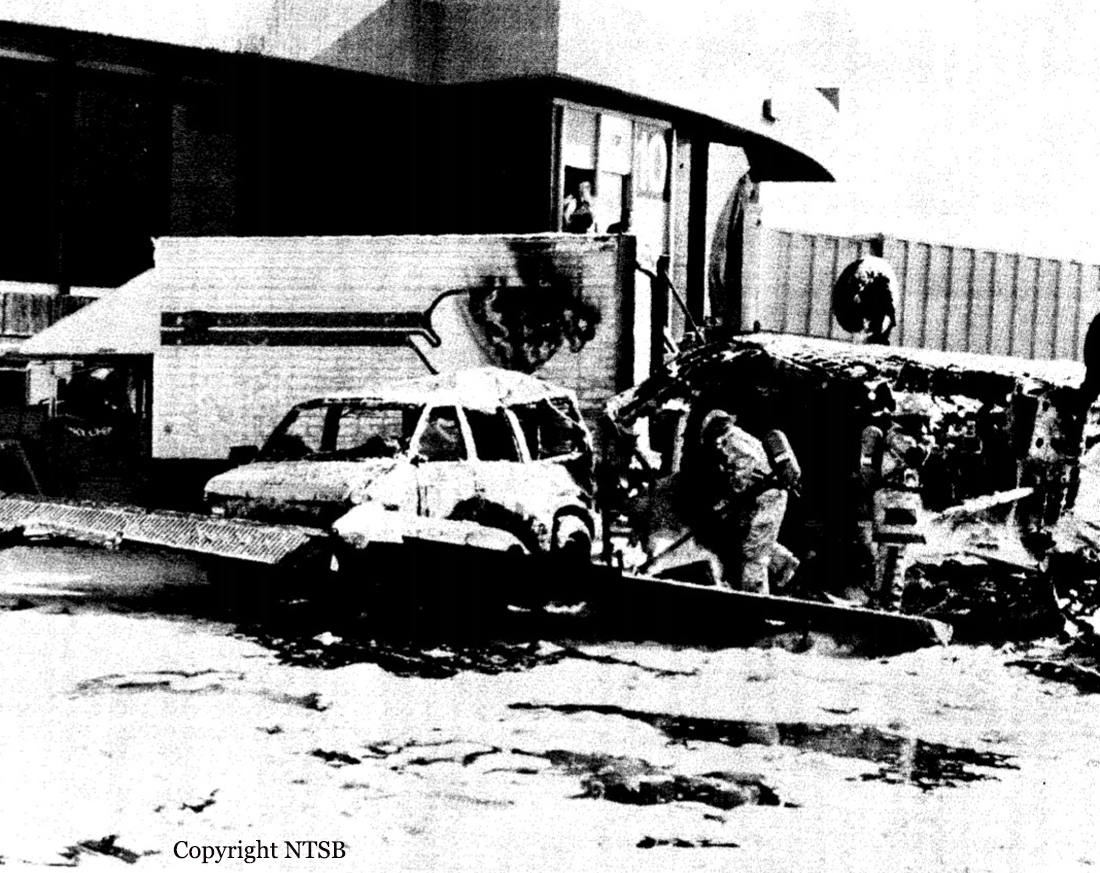Crash of a Cessna 402C in Hyannis
Date & Time:
Apr 12, 1987 at 1115 LT
Registration:
N87PB
Survivors:
Yes
Schedule:
Hyannis - Nantucket
MSN:
402C-0639
YOM:
1982
Crew on board:
1
Crew fatalities:
Pax on board:
8
Pax fatalities:
Other fatalities:
Total fatalities:
0
Captain / Total hours on type:
550.00
Aircraft flight hours:
6032
Circumstances:
Shortly after the initial power reduction during takeoff, the pilot noted a partial loss of power in the right engine. He said he 'went to full power on both engines' and noted an 'extremely high' fuel flow indication to the right engine. He said, 'thinking that the engine was flooding, I placed the boost pump switch from high to off to possibly eliminate the problem with no result. I then placed the pump back to high and tried to decrease the fuel flow by leaning the mixture. This also did not seem to eliminate the problem.' While troubleshooting the problem, he turned to a downwind and stayed in the traffic pattern, but could not maint altitude. Subsequently, a wheels-up landing was made in an area of small trees approximately 1/2 mile before reaching runway 24. An examination of the right engine revealed the spark plugs were wet with fuel and black with soot. Also, its #5 fuel nozzle had been cross-threaded and was knocked out of its hole during impact. During an initial test, the right fuel pressure sensing switch did not sense operating pressure (over 6 psi); this would have resulted in a high boost/fuel flow condition. Later, the switch was tested ok. All nine occupants escaped uninjured.
Probable cause:
Occurrence #1: loss of engine power (partial) - mech failure/malf
Phase of operation: takeoff - initial climb
Findings
1. (f) fuel system - pressure excessive
2. (f) powerplant controls - improper use of - pilot in command
----------
Occurrence #2: forced landing
Phase of operation: descent - emergency
Findings
3. (c) emergency procedure - improper - pilot in command
----------
Occurrence #3: in flight collision with terrain/water
Phase of operation: landing - flare/touchdown
Findings
4. (f) terrain condition - high vegetation
Phase of operation: takeoff - initial climb
Findings
1. (f) fuel system - pressure excessive
2. (f) powerplant controls - improper use of - pilot in command
----------
Occurrence #2: forced landing
Phase of operation: descent - emergency
Findings
3. (c) emergency procedure - improper - pilot in command
----------
Occurrence #3: in flight collision with terrain/water
Phase of operation: landing - flare/touchdown
Findings
4. (f) terrain condition - high vegetation
Final Report:









